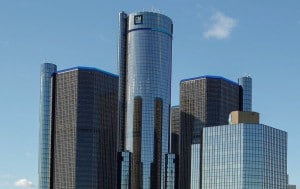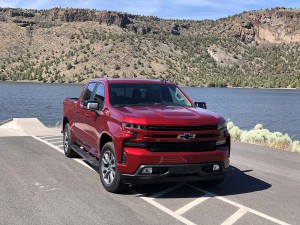General Motors Co. defied the odds, reporting that the company’s first-quarter net income dropped 86.2%; however, it still turned a $300 million profit despite the impact of the coronavirus pandemic on the company’s operations in China and North America.
GM’s revenue dropped 6.2% in the first quarter and earnings before interest and taxes declined 45 percent. Although the underlying business performance was strong, the results were heavily impacted by the COVID-19 pandemic, the company said as it released financial figures for the first quarter.
The EBIT-adjusted income in North America was higher, climbing to $2.2 billion, primarily as a result of strong sales of light-duty pickups and full-size SUVs, and transformational cost actions, partially offset by lower volume from suspending production in North America. In China, equity income was down $600 million year over year primarily as a result of pandemic, although the impact was partially offset by cost actions.
(GM’s April sales in China rebound, rising 13.6 percent.)
GM’s EPS-diluted in the first quarter was 17 cents per share, compared to 62 cents per share in the same period a year ago. Net income in the first quarter was $300 million, which includes a $1.4 billion impact from the COVID-19 pandemic.

GM CEO Mary Barra has been overseeing a variety of changes to help the company weather difficult times, like the current pandemic.
“We have a track record of making swift, strategic and tough divisions to ensure our long-term viability to create value for all stakeholders,” said GM Chairman and CEO Mary Barra.
Barra touted the company’s ability to react quickly to market conditions; however, it may have been a series of events years ago that helped ensure the company not only had enough cash to survive, but actually turn a profit.
After the Great Recession and the company’s bankruptcy, Barra led an effort to make strategic changes – read: cuts – to the company’s structure to make it leaner and more efficient. The company also began to try to keep more cash in its coffers for difficult times. Moves that Barra and senior executives were criticized for by some observers and institutional investors, who felt the cash reserves were too high and felt they should issue some form of dividend at that time.
The goal at the time was the make the company viable even if the North American market shrunk to 12 million units, officials noted at the time. Sales for this year are expected to drop to as low as 11.5 million units, although most predictions are coming in between 12 million and 13 million. Currently sales are trending at a seasonally adjusted average rate below 8 million units, according to analysts. The moves made several years ago have appeared to have some impact.
(GM halts dividend, suspends stock buyback, extends loan agreement to shore up balance sheet.)
GM sales in the U.S. declined about 7%, and although sales have been impacted differently across geographies, for many dealers, demand for full-size trucks remained strong. Sales of GM’s full-size pickups rose about 27% year over year, with a significant gain in retail market share.
They captured 41% of combined light- and heavy-duty segments in the first quarter, according to J.D. Power. In China, following the strongest sales impact in February, the industry started to pick up in March, narrowing the monthly sales decline.
When GM suspended operations, it also moved quickly to preserve its liquidity. GM ended the quarter with $33.4 billion in automotive liquidity, including an approximately $16 billion drawdown from its revolving credit facilities. In addition, the company extended $3.6 billion under its three-year revolving credit agreement, and GM and GM Financial renewed their 364-day $2 billion revolver.
GM has implemented aggressive austerity measures to preserve cash to ensure the ongoing viability of its operations. This included global executive and salaried compensation deferments and adjusted non-critical program timing. GM has suspended the quarterly dividend on its common stock and the company’s share repurchase program was also paused.
Barra said early on in this crisis, GM recognized that it had the capability to quickly support production of crucial medical equipment. In April, GM began producing and shipping critical care ventilators in collaboration with Ventec Life Systems at GM’s Kokomo facility.
(GM cutting executive pay, deferring salaried compensation.)
In less than a month, GM accepted a 30,000-unit order from the federal government. In a separate effort, GM temporarily converted its Warren plant to make personal protective equipment and has donated one million face masks. SAIC-GM-Wuling in China and GM Mexico have also been manufacturing face masks, and GM is preparing a plant in Canada to do the same.


